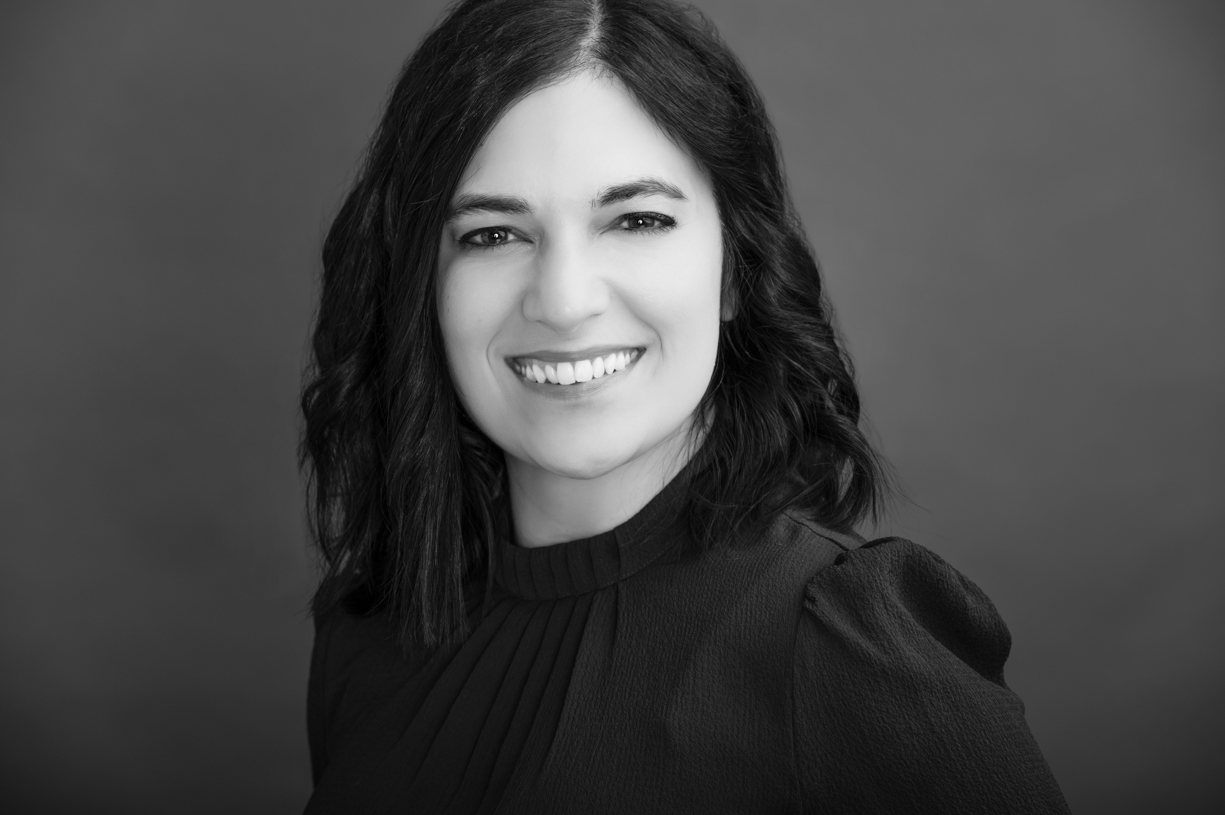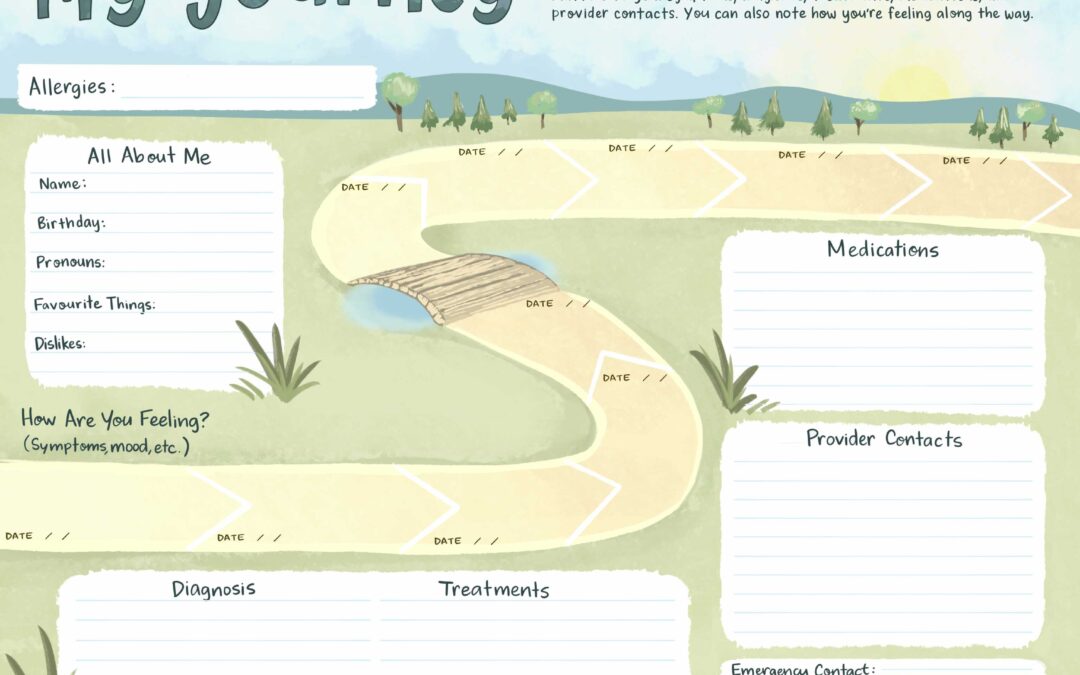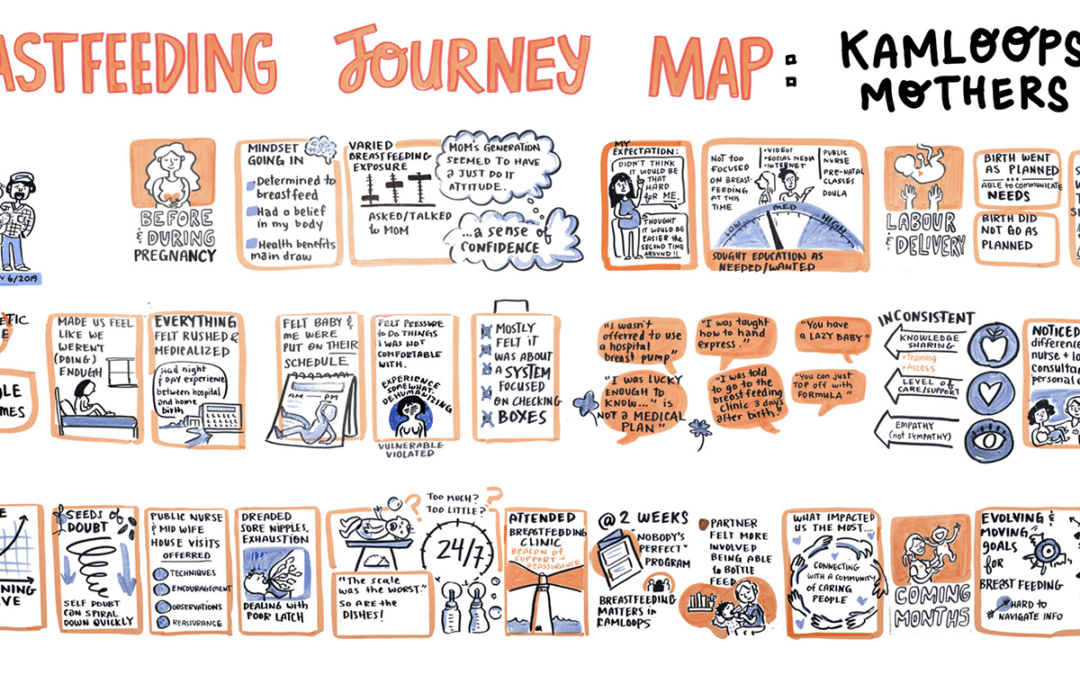A case study explores the planning and preparation that went into a project, the challenges, results, and what could be improved for next time.
We were honoured to create a unique interactive Knowledge Wall for attendees at HELISET TŦE SḰÁL – ‘Let The Languages Live’ 2019 International Conference On Indigenous Languages. This international conference, co-hosted by UNESCO and the First Peoples’ Cultural Council, brought together 1200+ Indigenous language speakers from around the globe to celebrate language and identify revitalization strategies.
The Brief
The event was to take place over three days in Victoria, BC. In addition to graphic recording each keynote, the client also wanted an interactive Knowledge Wall in the main foyer. The main objectives of the Knowledge Wall:
➜ Gather insights from people on the future of Indigenous languages
➜ Capture key highlights from the 26 breakout sessions
➜ Include a diversity of Indigenous language and culture
Because attendees were from around the globe — from the Sámi people of Norway, to Māori of New Zealand, to the Tlingit peoples from the Yukon, and First Nations, Métis, and Inuit peoples from across BC and Canada — this large Knowledge Wall needed to capture the diversity of culture and language. It also needed to celebrate the United Nations Year of Indigenous Languages in an authentic and memorable way.
The Approach
Over the last nine years we’ve had the honour of collaborating with First Nations across British Columbia, the Yukon, and Alberta. Our approach is based in cultural sensitivity trainings and the Truth & Reconciliation Commission Calls to Action. This means we work in a partnership role with cultural humility, openness and respect, and honouring of Indigenous diversity and world views.
Research
We began by researching Indigenous languages around the world, focusing mostly on publications and sources from UNESCO and the First Peoples’ Cultural Council. We identified key themes on language revitalization:
➜ Language is tied to culture; in fact, language is culture
➜ Language holds complex historical knowledge, such as the history of peoples, environmental changes and patterns, medicinal healing, and traditional practices
➜ Language is a valuable expression of the human experience. There are concepts and humour expressed in one language that cannot be translated into another.
Although Indigenous languages hold tremendous value, they are dying at an alarming rate. Predictions estimate that 40 – 50% of the world’s 6500+ languages will die out by the end of this century. When we lose an Indigenous language, the world loses valuable knowledge and diversity of thought and culture.
Rough sketches and brainstorming
After our initial research, Minh and I began sketching and brainstorming a plan. We knew the Knowledge Wall had to be large to encompass content spanning three days.
Knowledge Walls are strongest when we have prompt questions to get people thinking. People like to take in a Knowledge Wall from a distance before deciding to engage, so having prompt questions up on the wall helps do the pre-work of getting people thinking. The client had identified five key questions they wanted on the wall, and requested that a handful of major themes from the 26 breakout sessions be integrated as well.
We also wanted to honour Indigenous languages in an authentic way without losing meaning or valuing one language over another. It would prove challenging to fit this all into one wall.
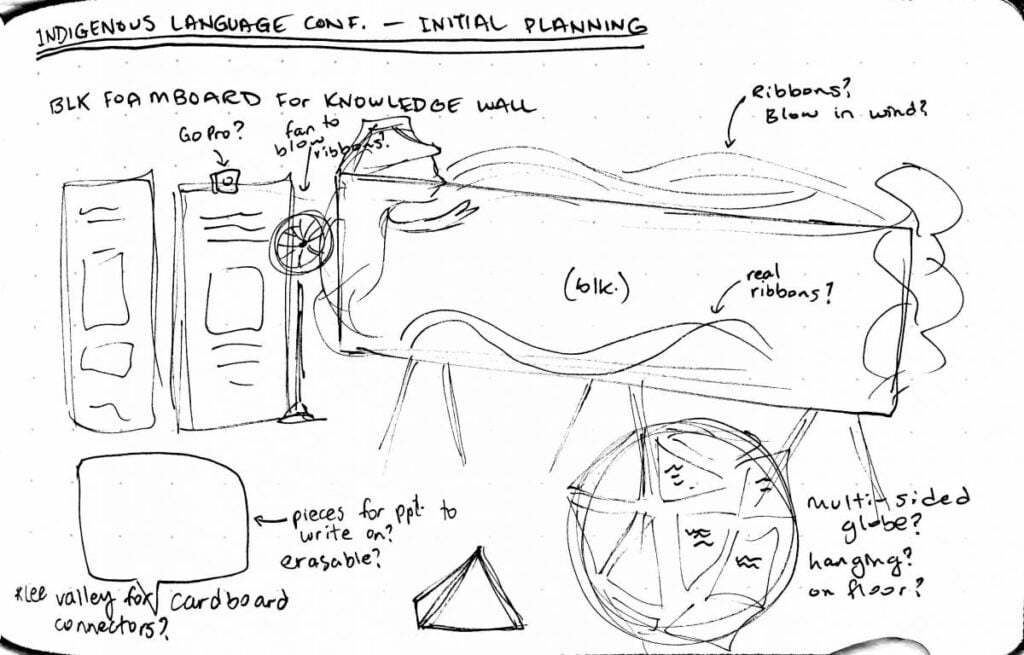 Early sketches of the Knowledge Wall. We initially thought a three dimensional globe might capture the diversity of languages.
Early sketches of the Knowledge Wall. We initially thought a three dimensional globe might capture the diversity of languages.
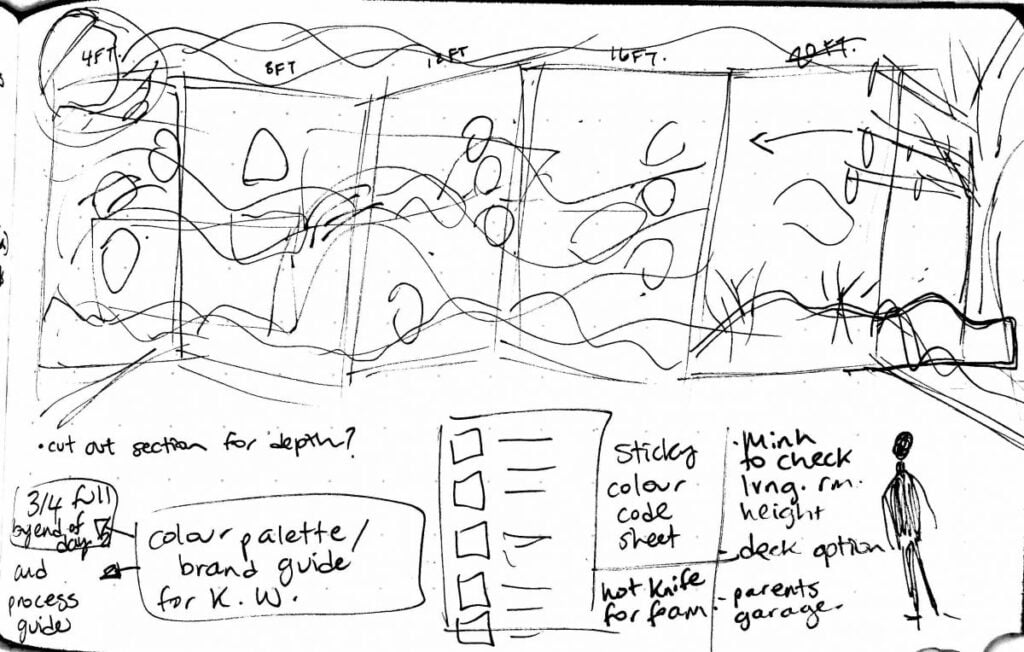 Brainstorming of how to best test the set up ahead of time, and ways of organizing the content.
Brainstorming of how to best test the set up ahead of time, and ways of organizing the content.
We determined that the Knowledge Wall should be sized 8ft tall by 20ft long, divided into five sections for the five questions. Rather than working on white paper, black would make words pop and further emphasize the power of language.
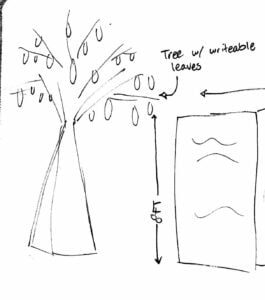
First sketch of the Language Tree.
We also mocked up a Language Tree: a dedicated space for honouring the diversity of languages. We felt it was best to “put the pen in peoples’ hands” rather than having people tell us what to write, which wouldn’t model ownership of language. Participants would write a phrase or prayer on a leaf and hanging it on the Language Tree, intermingling languages and “growing together.”
As a final activity, Minh thought of having people plant a native flower seed in soil at the base of the tree. This would serve two purposes: (1) people whose language was primarily oral (and not written) could still participate by planting a seed; and (2) because the Language Tree would be dismantled at the end of the three days, we wanted a way to literally let the languages live beyond the conference. The soil would be planted in the Na’tsa’maht Indigenous Plant Garden at Camosun College.
Team
We knew immediately we’d need a small team to support the event: a graphic recorder to capture the keynotes throughout the day (Tanya), a graphic recorder to populate the Knowledge Wall (Minh), a team member to help with supplies coordination and set up/take down (Cameron), and team members to engage people at the Knowledge Wall & Language Tree, and support the graphic recorders (Leslie and Patricia).
Finally, we would need “listeners” in each of the breakout sessions to capture high-level notes (e.g. “top three” themes) so we could integrate content from breakouts on the wall. We decided these could be volunteers or members of the client’s staff.
Proposal to the Client
Preparing a proposal for the client is an important part of ensuring we’re on the right track. We bring visual expertise to the partnership; the client brings a deep knowledge of their work and audience. It’s crucial we work together with the client to determine the best approach, ensure we’re sensitive to the topics and audience, and so the client knows what to expect on the day.
We prepared a proposal document for the client that explained the purpose and themes behind our approach, had sketches of the Knowledge Wall and Language Tree, and description of the seed planting activity.
Excerpts from proposal document we sent to the client for approval:
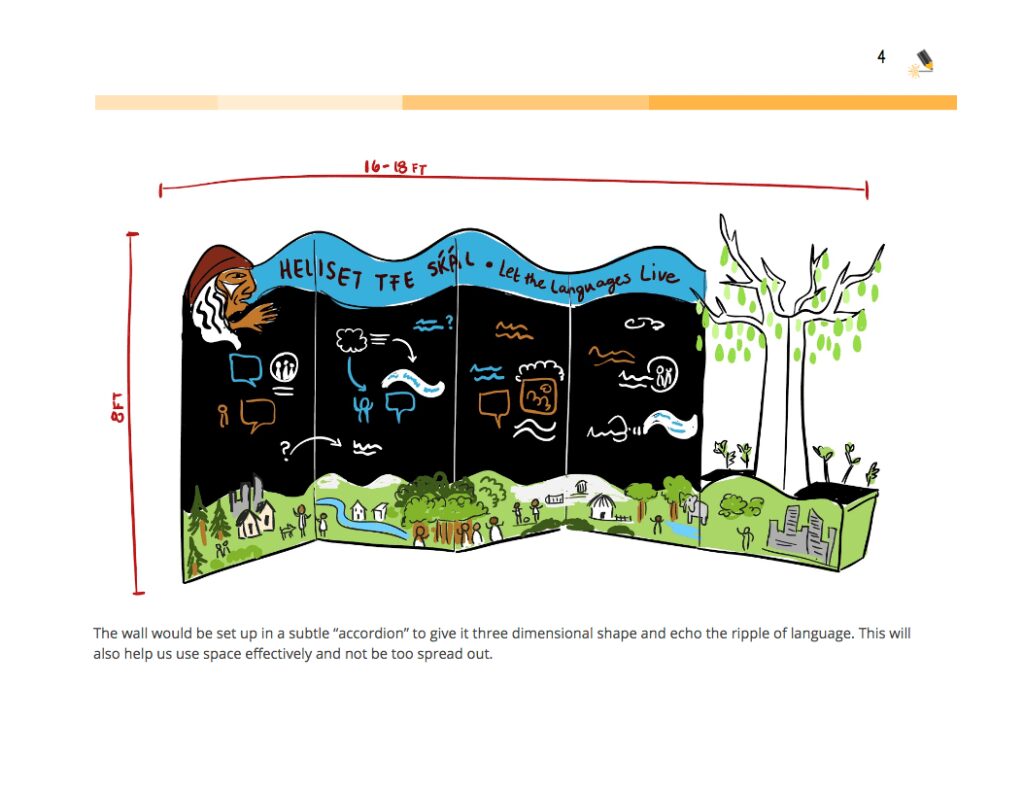 .
.
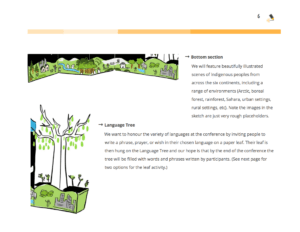 .
.
We also included a bio for each team member to “introduce” them and outline their role and expertise. The client was thrilled and approved the concept — they felt the entire engagement would be a deeply memorable experience for participants.
Team playbook
After we had approval, we set to work compiling a team “playbook.” A team playbook is essential for ensuring everything stays on track for a large project. This can be set up in Google Docs or an online project management system such as Asana, Basecamp, or Zoho. We chose Google Docs for ease of editing and the ability to print the playbook.
Similar to the proposal document we sent the client, the team playbook is more detailed and includes:
Milestone dates: Working backward from the conference day, we set target dates (with buffer room) for completing the prep on the Knowledge Wall and Language Tree.
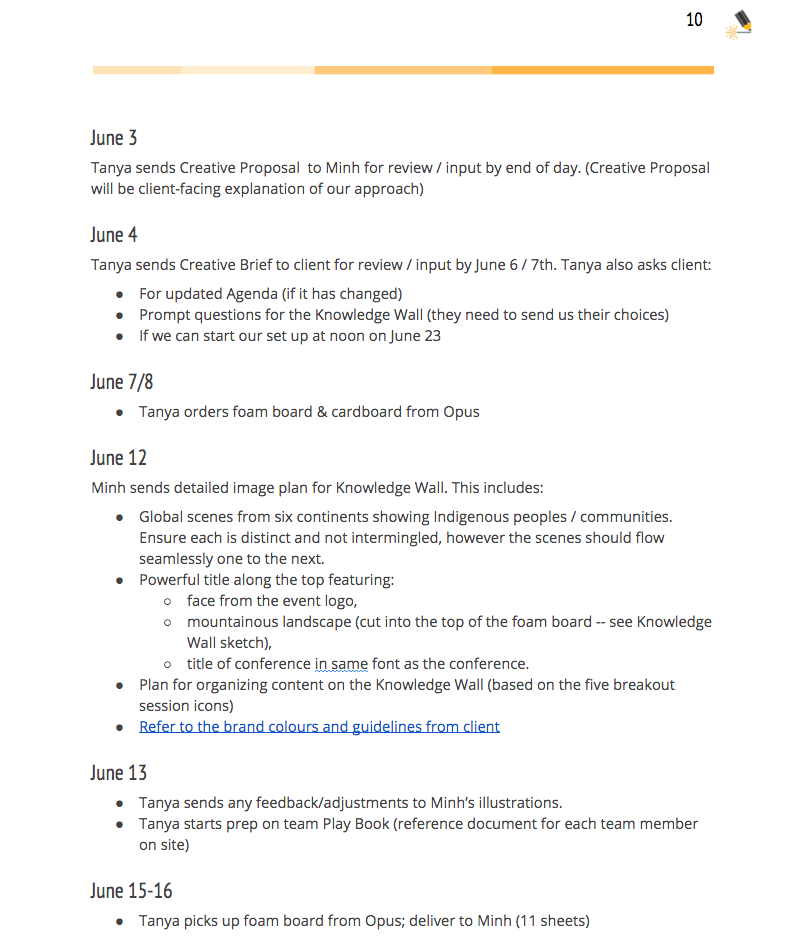 Excerpt from team playbook showing a few milestone dates.
Excerpt from team playbook showing a few milestone dates.
Roles
Defining team roles is important so everyone knows what’s expected. In addition to supporting engagement at the Knowledge Wall and Language Tree, Leslie and Patricia would also photograph the work in action, which is important for documentation and final reports. We included example photos of the shots we’d need.
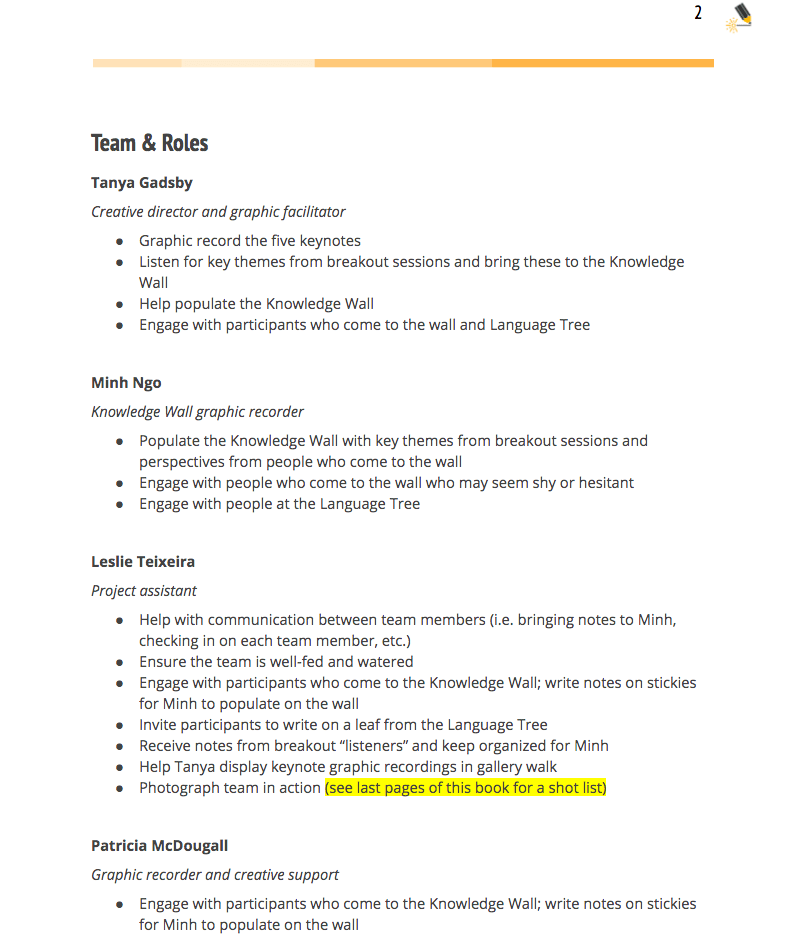
Excerpt from team playbook listing team roles.
Description of Knowledge Wall and Language Tree
Everyone on the team needed to know exactly how the engagement process would work at the Knowledge Wall and Language Tree. What questions to ask participants, how to help them feel comfortable and welcome, and what would best support Minh in populating the wall.
For example, we assigned colour coded sticky notes to each theme on the Knowledge Wall. If a team member was speaking with a participant or one of the volunteer listeners from the breakout sessions, they could take notes on the corresponding colour of sticky note so Minh and I would know exactly where to place the content on the Knowledge Wall.
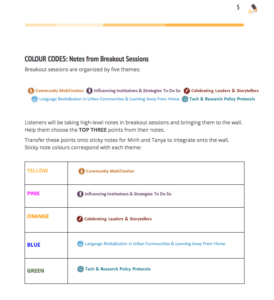
Excerpt from team playbook listing the colour coding for sticky notes.
Materials list
We went through our materials needs in detail and compiled a master list. This was important for ensuring items were ordered or picked up by their target dates, and so we could assign items to specific team members.
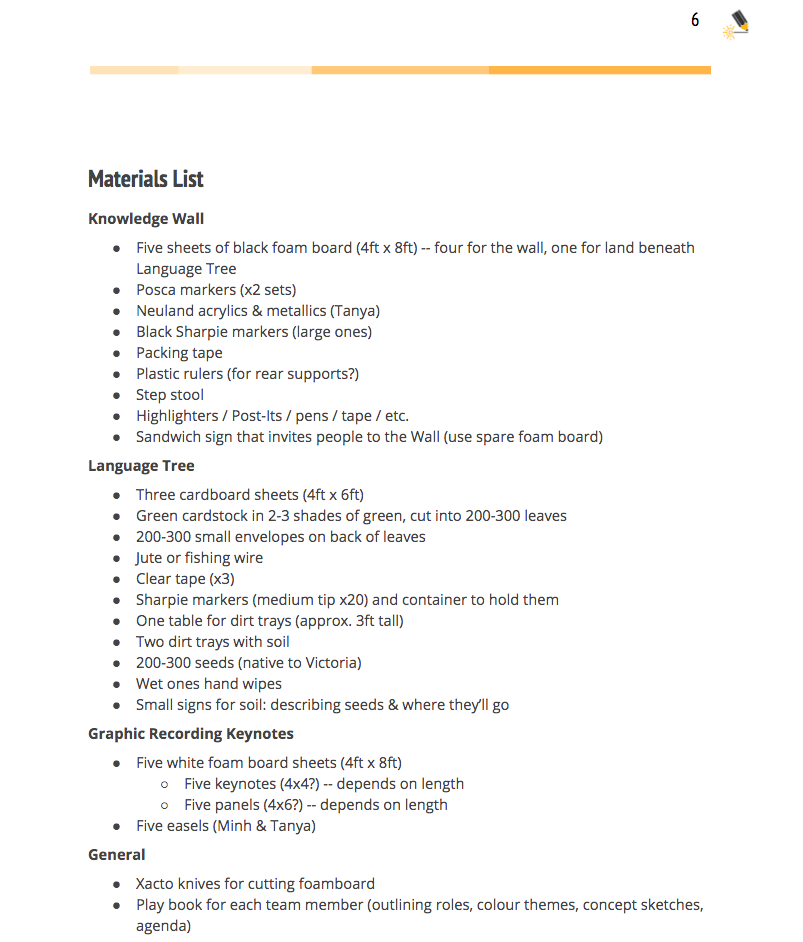 Excerpt from a two-page materials list.
Excerpt from a two-page materials list.
Links to resources and shared files
Research is an essential part of preparing for any graphic recording job, but when you’re working on a team, it’s most efficient if everyone references the same materials and builds upon the content. We wanted to ensure the images were as diverse as possible and that we were referencing articles from reliable sources.
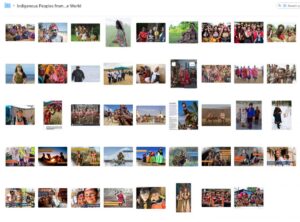
Shared Dropbox folders for compiling images, articles, and web resources.
Preparation time
The team playbook was essential for tracking our progress and ensuring nothing was missed. We also blocked off the week before the conference in our calendars for preparing the Knowledge Wall and Language Tree (in addition to preparing boards for graphic recording).
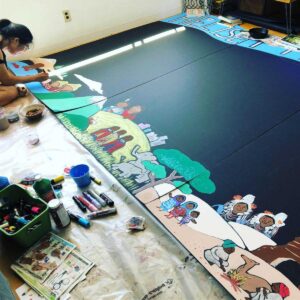
Minh Ngo preparing Knowledge Wall panels.
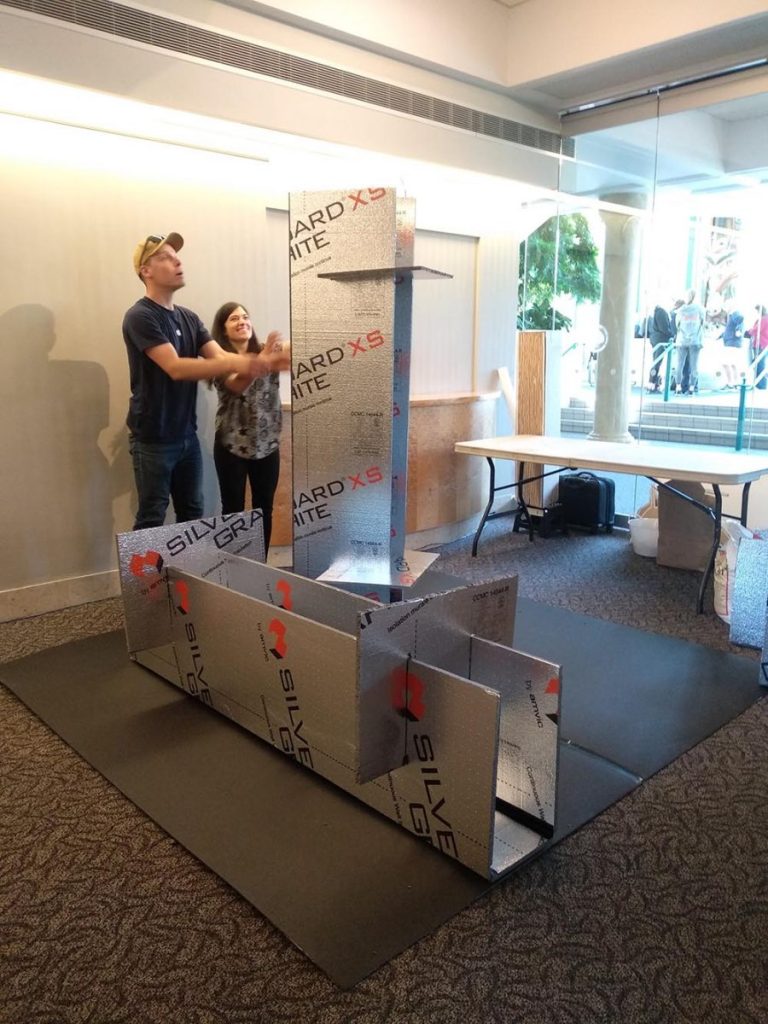
Building the Language Tree.
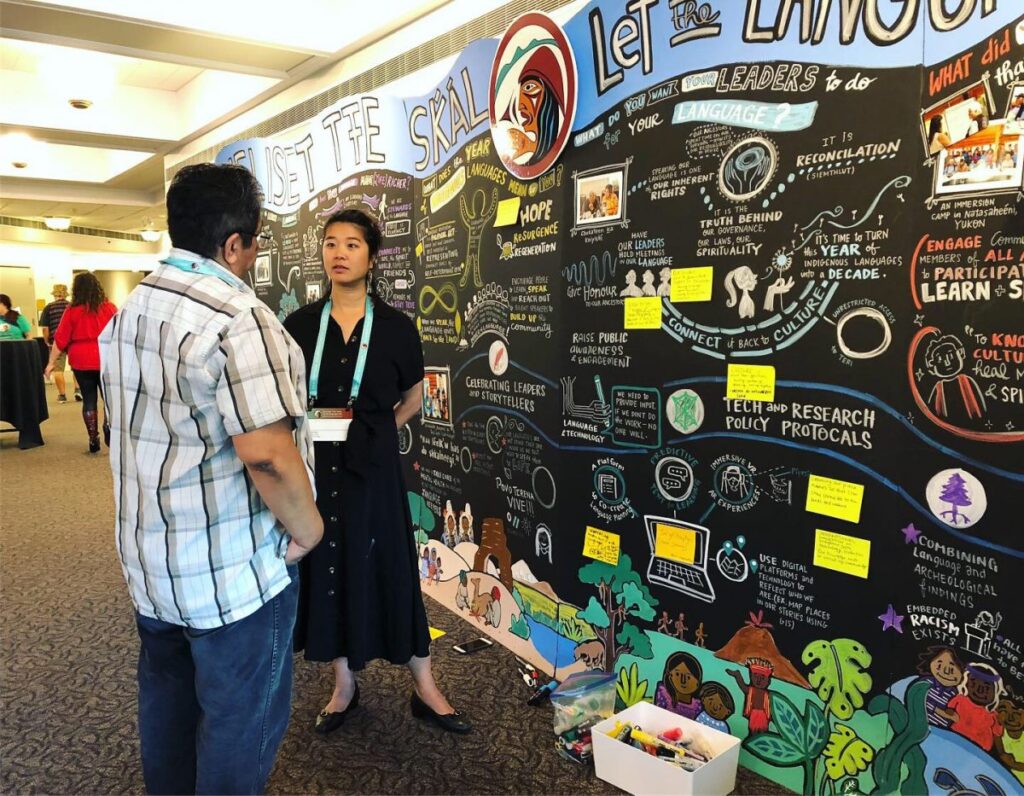
Video walkthrough of Language Tree./
The Language Tree was especially moving for people. Many participants spent time reviewing the leaves before adding their own language to the tree. Others touched the branches and said a silent prayer before planting their seed in the soil.
The Knowledge Wall was photographed in 20 sections. Within 48 hours of the conference, we stitched together the images in Photoshop and sent a very high-resolution image to the client for review.
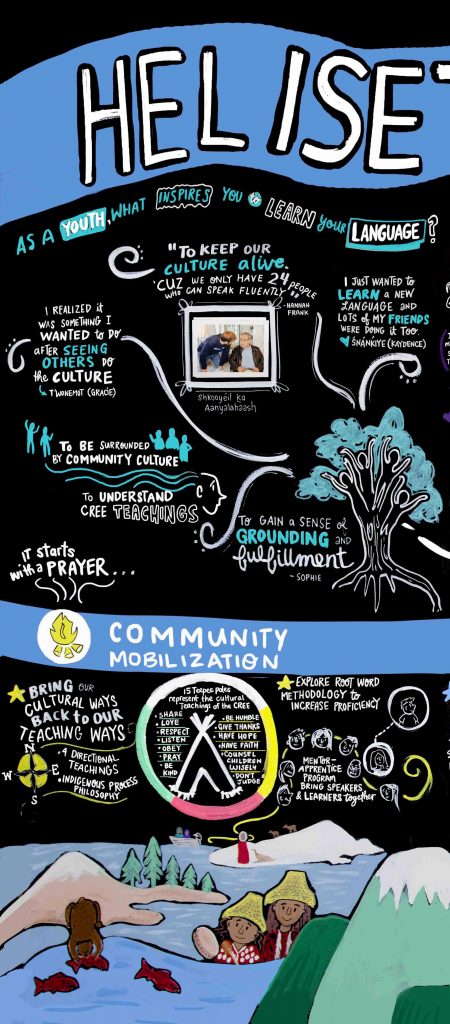
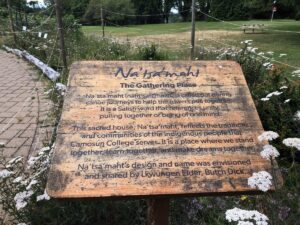
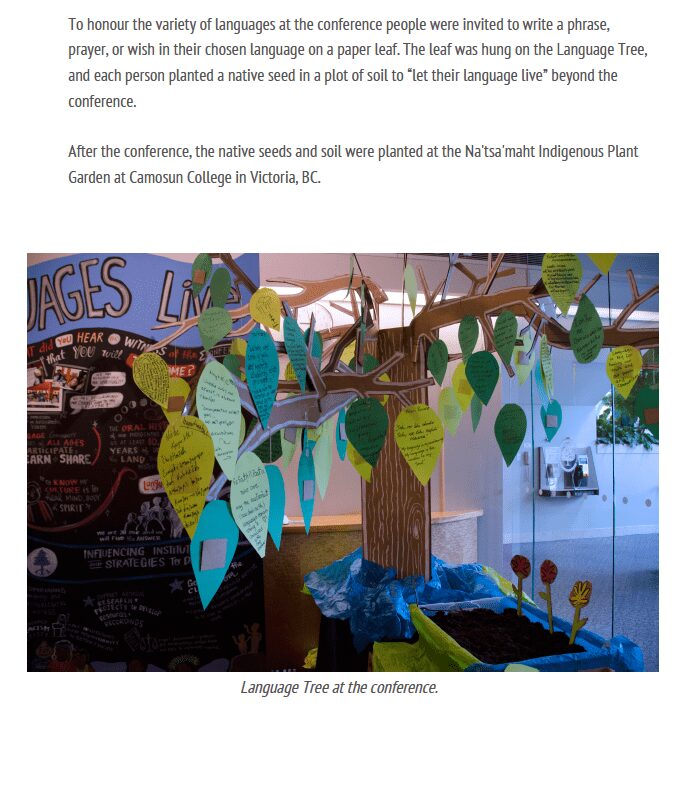
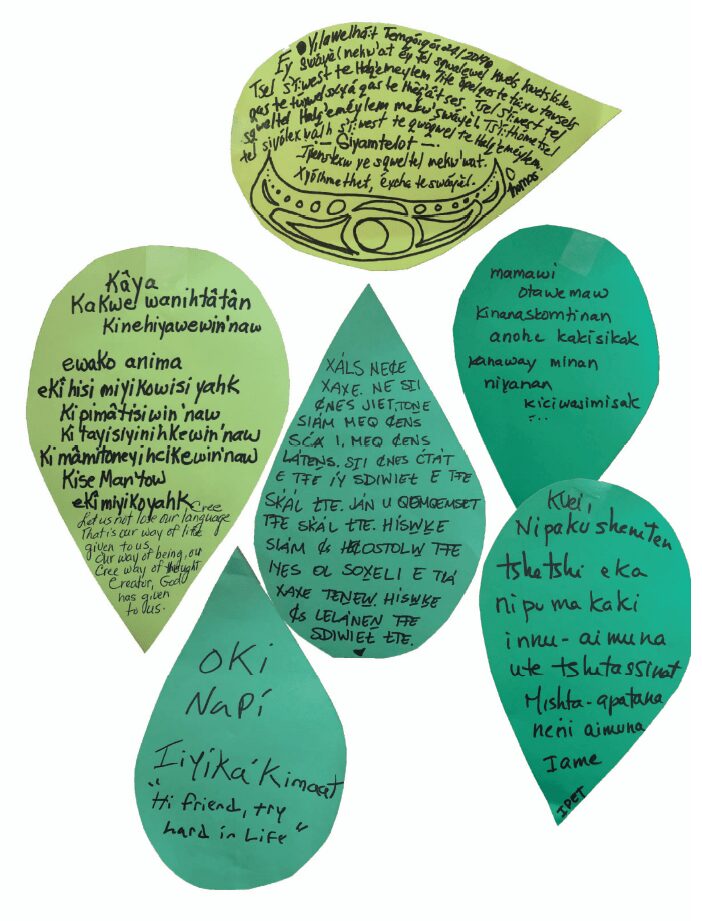
What We’d Do Differently Next Time
Even though we had a small team on site, it would have helped to have a dedicated person to post on social media and on the conference app. This could have been one of our team members, or we could have worked with one of the client’s staff or volunteers. Because the conference was large with a lot of simultaneous breakouts, publishing content on the conference app and social media was essential for driving people to the Knowledge Wall and Language Tree.
Most of our graphic recording work is based in Vancouver or other cities in North America, so it was a rare treat to work on such a large project in our home city of Victoria. Coordinating a project of this scale in a different city would require far more planning and set up time on site, especially as supplies would have to be shipped ahead of time.
